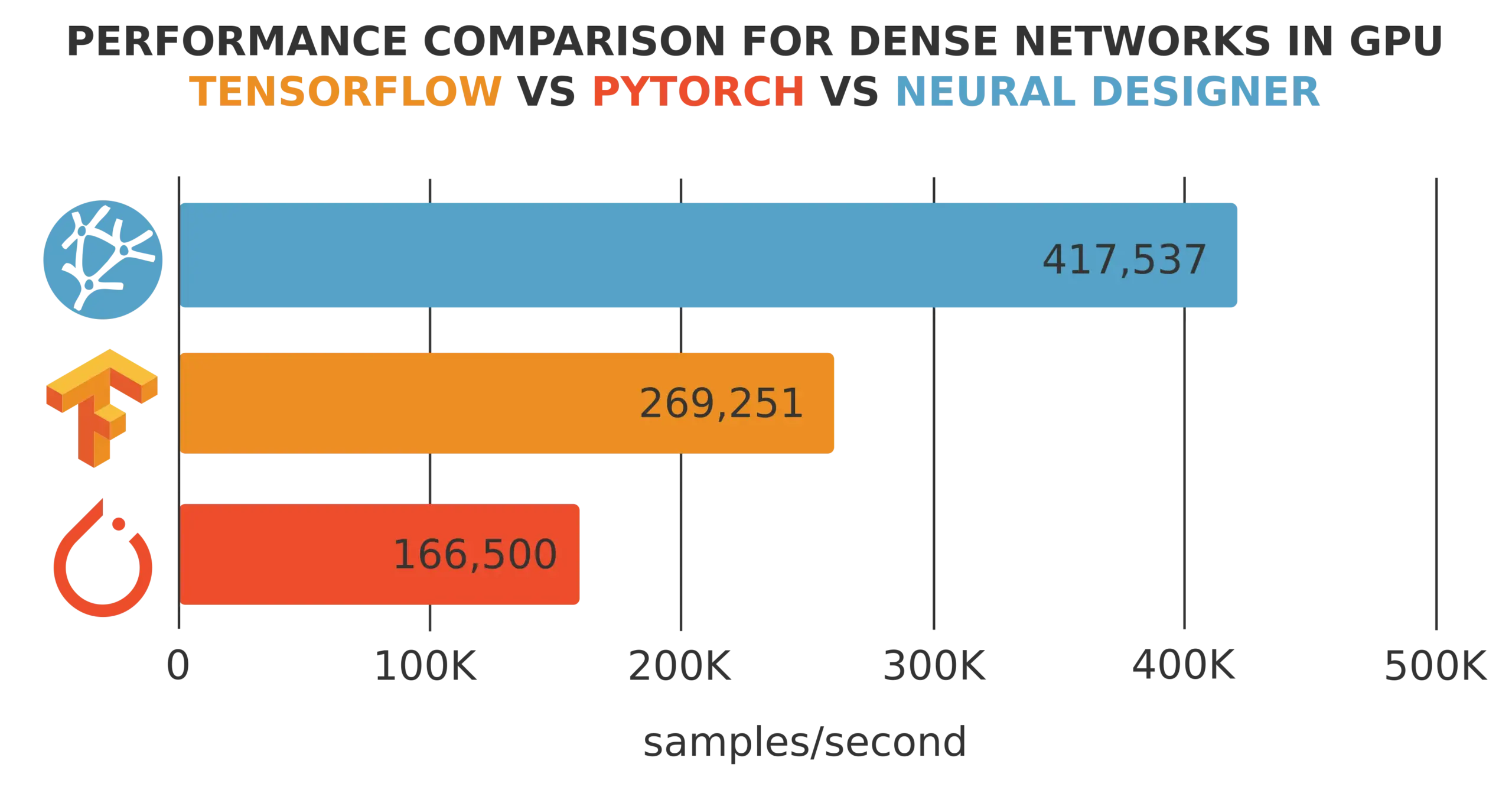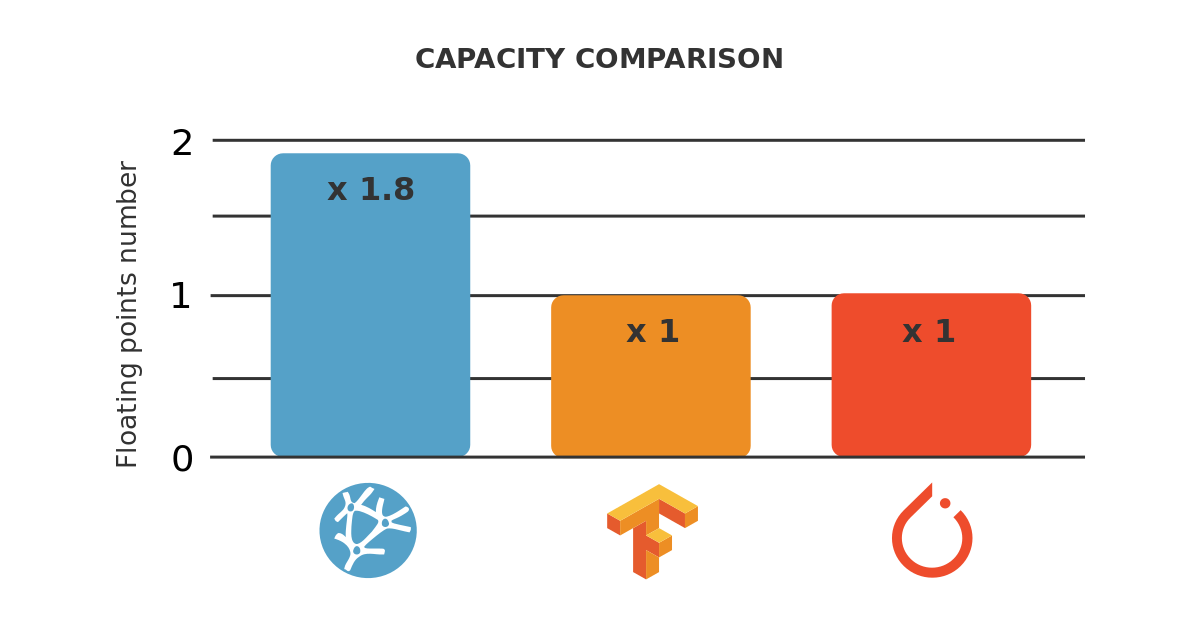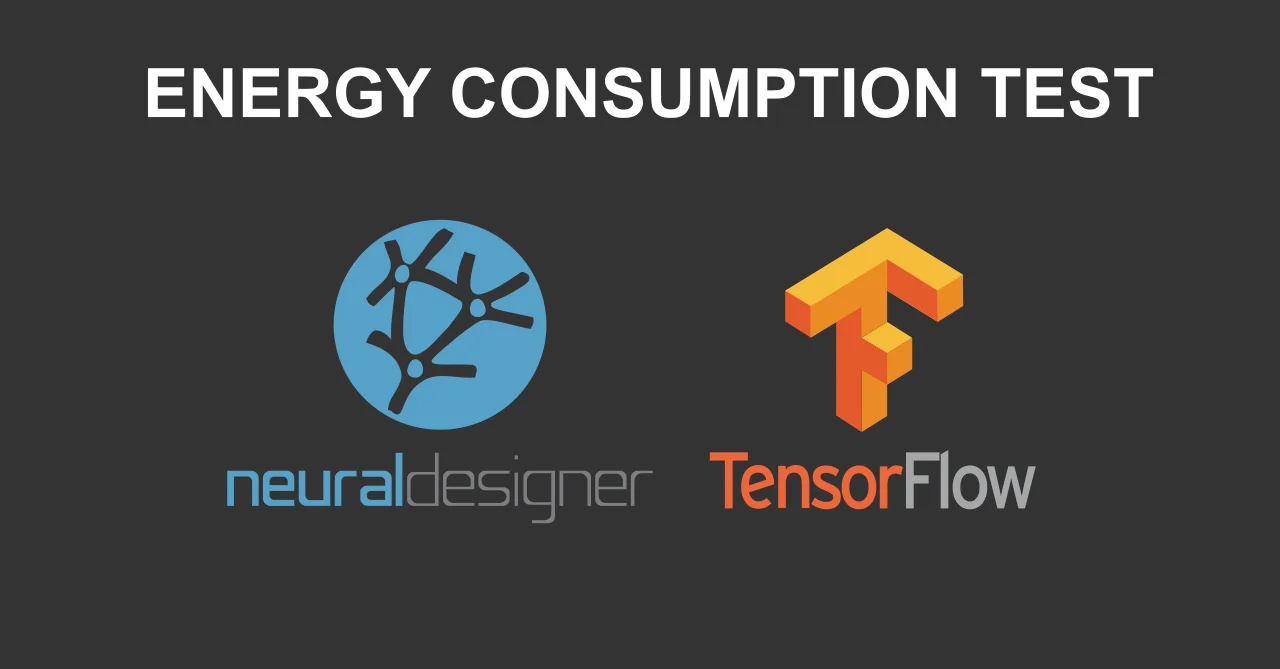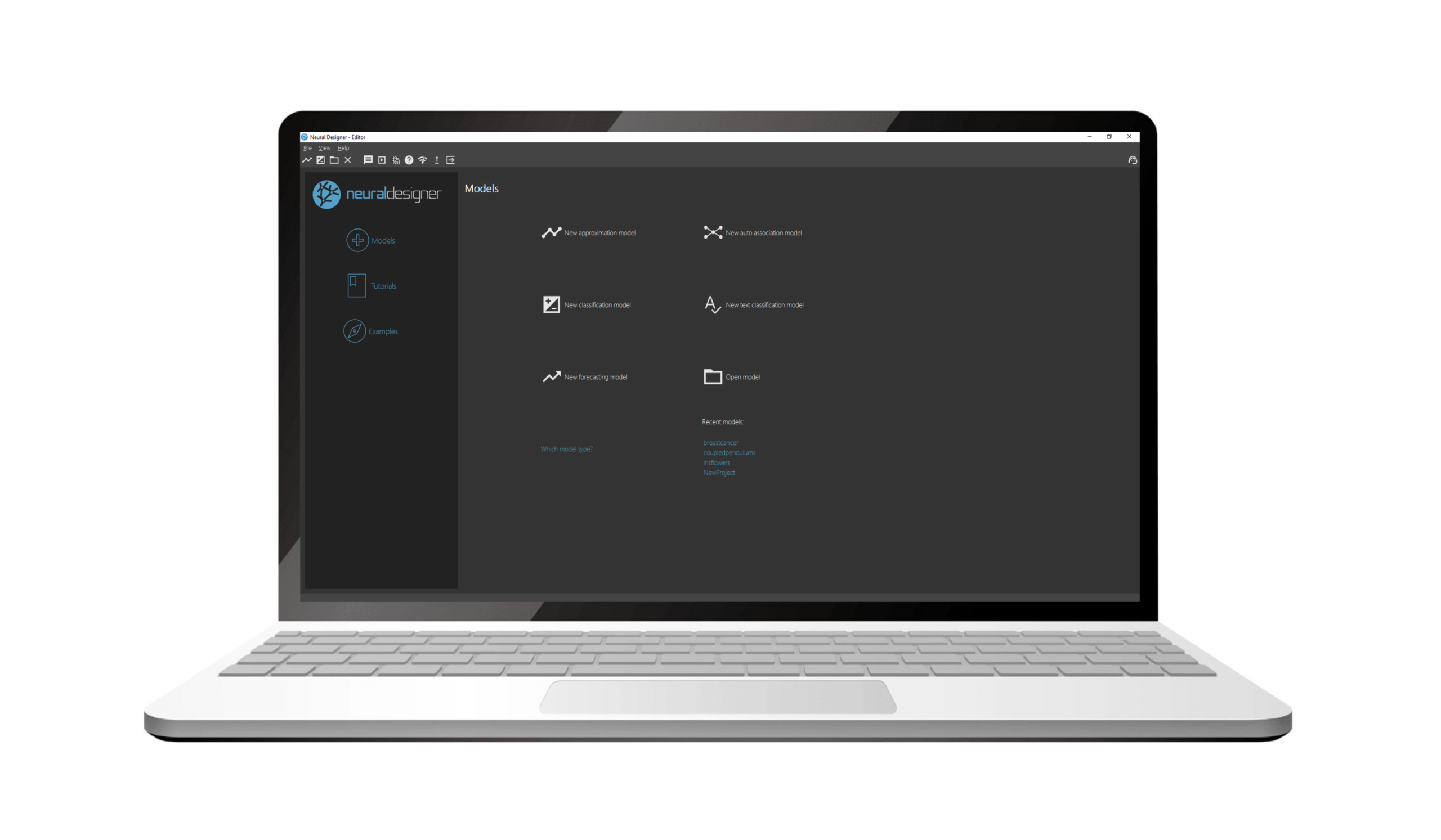This post compares the training precision of TensorFlow, PyTorch, and Neural Designer for an approximation benchmark.
TensorFlow, PyTorch and Neural Designer are three popular machine learning platforms developed by Google, Facebook and Artelnics, respectively.
Although all those frameworks implement neural networks, they present some important differences in functionality, usability, performance, etc.
As we will see, the training accuracy of Neural Designer using the Levenberg-Marquardt algorithm is x1.91 higher than that of TensorFlow and x1.21 times higher than that of PyTorch using Adam.
Moreover, Neural Designer trains this neural network x5.71 times faster than TensorFlow and x8.21 times faster than PyTorch.
In this article, we outline all the steps required to reproduce the results using Neural Designer (download)
Contents
Introduction
One of the most critical factors in machine learning platforms is their training accuracy.
This article aims to measure the training accuracies of TensorFlow, PyTorch, and Neural Designer for a benchmark application and compare the speeds obtained by those platforms.
The most important factor for training accuracy is the optimization algorithm used.
The above table shows that TensorFlow and PyTorch are programmed in C++ and Python, while Neural Designer is entirely programmed in C++.
Next, we measure the training accuracy for a benchmark problem on a reference computer using TensorFlow, PyTorch, and Neural Designer. We then compare the results produced by that platforms.
Benchmark application
The first step is to choose a benchmark application that is general enough to conclude the performance of the machine learning platforms. As previously stated, we will train a neural network that approximates a set of input-target samples.
In this regard, an approximation application comprises a data set, a neural network, and an associated training strategy.
The next table uniquely defines these three components.
Data set |
|
|---|---|
Neural network |
|
Training strategy |
|
Once we have created the TensorFlow, PyTorch, and Neural Designer applications, we need to run them.
Reference computer
The next step is to choose the computer to train the neural networks with TensorFlow, PyTorch, and Neural Designer.
| Operating system: | Windows 10 Enterprise |
|---|---|
| Processor: | CPU Intel(R) Xeon(R) Platinum 8259CL CPU @ 2.50GHz |
| Physical RAM: | 16.0 GB |
Once the computer has been chosen, we install TensorFlow (2.1.0), PyTorch (1.7.0), and Neural Designer (5.9.0) on it.
#TENSORFLOW CODE import tensorflow as tf import pandas as pd import time import numpy as np #read data float32 start_time = time.time() filename = "C:/R_new.csv" df_test = pd.read_csv(filename, nrows=100) float_cols = [c for c in df_test if df_test[c].dtype == "float64"] float32_cols = {c: np.float32 for c in float_cols} data = pd.read_csv(filename, engine='c', dtype=float32_cols) print("Loading time: ", round(time.time() - start_time), " seconds") x = data.iloc[:,:-1].values y = data.iloc[:,[-1]].values initializer = tf.keras.initializers.RandomUniform(minval=-1., maxval=1.) #build model model = tf.keras.models.Sequential([tf.keras.layers.Dense(1000, activation = 'tanh', kernel_initializer = initializer, bias_initializer=initializer), tf.keras.layers.Dense(1, activation = 'linear', kernel_initializer = initializer, bias_initializer=initializer)]) #compile model model.compile(optimizer='adam', loss = 'mean_squared_error') #train model start_time = time.time() history = model.fit(x, y, batch_size = 1000, epochs = 1000) print("Training time: ", round(time.time() - start_time), " seconds")
Building this application with PyTorch also requires some Python scripting. This code is listed below. Also, you can download here.
#PYTORCH CODE import pandas as pd import time import torch import numpy as np import statistics def init_weights(m): if type(m) == torch.nn.Linear: torch.nn.init.uniform_(m.weight, a=-1.0, b=1.0) torch.nn.init.uniform_(m.bias.data, a=-1.0, b=1.0) epoch = 1000 total_samples, batch_size, input_variables, hidden_neurons, output_variables = 1000000, 1000, 1000, 1000, 1 device = torch.device("cuda:0") # read data float32 start_time = time.time() filename = "C:/R_new.csv" df_test = pd.read_csv(filename, nrows=100) float_cols = [c for c in df_test if df_test[c].dtype == "float64"] float32_cols = {c: np.float32 for c in float_cols} dataset = pd.read_csv(filename, engine='c', dtype=float32_cols) print("Loading time: ", round(time.time() - start_time), " seconds") x = torch.tensor(dataset.iloc[:,:-1].values, dtype = torch.float32) y = torch.tensor(dataset.iloc[:,[-1]].values, dtype = torch.float32) # build model model = torch.nn.Sequential(torch.nn.Linear(input_variables, hidden_neurons), torch.nn.Tanh(), torch.nn.Linear(hidden_neurons, output_variables)).cuda() # initialize weights model.apply(init_weights) # compile model learning_rate = 0.001 loss_fn = torch.nn.MSELoss(reduction = 'mean') optimizer = torch.optim.Adam(model.parameters(), lr=learning_rate) indices = np.arange(0,total_samples) start = time.time() for j in range(epoch): mse=[] t0 = time.time() for i in range(0, total_samples, batch_size): batch_indices = indices[i:i+batch_size] batch_x, batch_y = x[batch_indices], y[batch_indices] batch_x = batch_x.cuda() batch_y = batch_y.cuda() outputs = model.forward(batch_x) loss = loss_fn(outputs, batch_y) model.zero_grad() loss.backward() optimizer.step() mse.append(loss.item()) print("Epoch:", j+1,"/1000", "[================================] - ","loss: ", statistics.mean(mse)) t1 = time.time() - t0 print("Elapsed time: ", int(round(t1 )), "sec") end = time.time() elapsed = end - start print("Training time: ",int(round(elapsed )), "seconds")
Once the TensorFlow, PyTorch, and Neural Designer applications have been created, we need to run them.
Results
The last step is to run the benchmark application on the selected machine with TensorFlow, PyTorch, and Neural Designer and compare those platforms’ training times.
The next figure shows the training results with TensorFlow.
| Run | Time | MSE |
|---|---|---|
| 1 | 00:47 | 0.0587 |
| 2 | 00:48 | 0.0582 |
| 3 | 00:48 | 0.0988 |
| 4 | 00:47 | 0.1012 |
| 5 | 00:47 | 0.0508 |
| 6 | 00:48 | 0.1008 |
| 7 | 00:51 | 0.0333 |
| 8 | 00:52 | 0.0998 |
| 9 | 00:50 | 0.0582 |
| 10 | 00:48 | 0.0454 |
As we can see, the minimum mean squared error by TensorFlow is 0.0333, and the average mean squared error over the ten runs is 0.0705. The average training time is 48.6 seconds.
Similarly, the following figure is a screenshot of PyTorch at the end of the process.
| Run | Time | MSE |
|---|---|---|
| 1 | 01:15 | 0.0294 |
| 2 | 01:09 | 0.0474 |
| 3 | 01:10 | 0.0332 |
| 4 | 01:08 | 0.0586 |
| 5 | 01:10 | 0.0221 |
| 6 | 01:09 | 0.0480 |
| 7 | 01:12 | 0.1006 |
| 8 | 01:10 | 0.0332 |
| 9 | 01:09 | 0.0582 |
| 10 | 01:06 | 0.0988 |
In this case, the minimum mean squared error by PyTorch over the ten runs is 0.0221.
The average mean squared error is 0.0529. The average training time is 69.8 seconds.
Finally, the following figure shows the training results with Neural Designer.
| Run | Time | MSE |
|---|---|---|
| 1 | 00:08 | 0.0196 |
| 2 | 00:09 | 0.0263 |
| 3 | 00:08 | 0.0254 |
| 4 | 00:09 | 0.0191 |
| 5 | 00:09 | 0.0413 |
| 6 | 00:09 | 0.0263 |
| 7 | 00:08 | 0.0397 |
| 8 | 00:08 | 0.0174 |
| 9 | 00:08 | 0.0527 |
| 10 | 00:09 | 0.0521 |
The minimum mean squared error by Neural Designer is 0.0174. The average mean squared error over the ten runs is 0.0320.
With Neural Designer, the average training time is 8.5 seconds.
The following table summarizes the metrics yield by the three machine learning platforms.
| TensorFlow | PyTorch | Neural Designer | |
|---|---|---|---|
| Minimum MSE | 0.0333 | 0.0221 | 0.0174 |
| Average MSE | 0.0705 | 0.0529 | 0.0320 |
| Average training time | 48.6 seconds | 69.8 seconds | 8.5 seconds |
Finally, the following chart depicts the training accuracies of TensorFlow, PyTorch, and Neural Designer for this case graphically.
As we can see, both the minimum and the average mean squared error of Neural Designer using the LM algorithm is smaller than that of TensorFlow and PyTorch using Adam.
Using these metrics, we can say that the precision of Neural Designer for this benchmark is x1.91 times bigger than that of TensorFlow and 1.27 times higher than that of PyTorch.
Regarding the training time, in this benchmark, Neural Designer is about x5.72 times faster than TensorFlow and x8.21 times faster than PyTorch.
Conclusions
Neural Designer implements second-order optimizers, such as the quasi-Newton method and the Levenberg-Marquardt algorithm. These algorithms have better convergence properties for small and medium-sized datasets than first-order optimizers, such as Adam.
This results in that, for the benchmark described in this post, the precision of Neural Designer is x1.91 times faster than that of TensorFlow and x1.27 times faster than that of PyTorch.
To reproduce these results, download Neural Designer and follow the steps described in this article.





